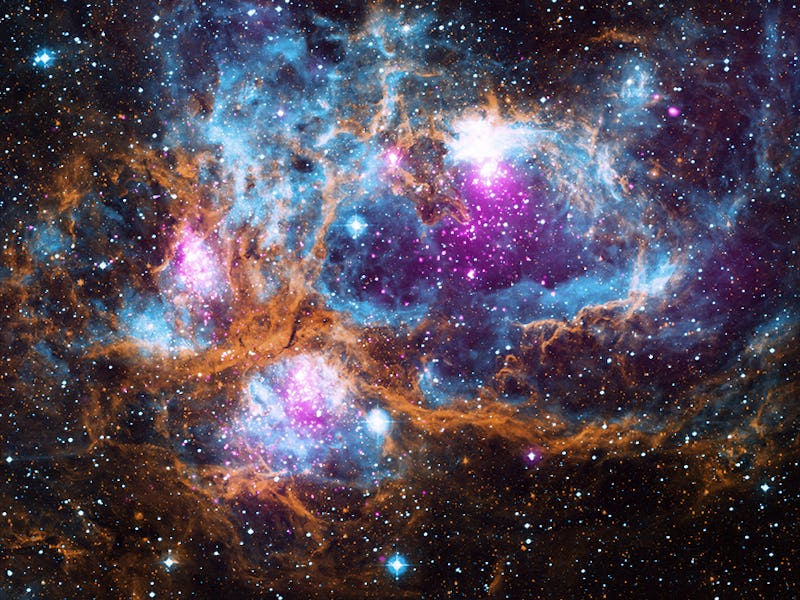Lobster Nebula Photo Vividly Melts Electromagnetic Spectrum Together

Sometimes it takes some telescope teamwork to get a truly stunning image of an object 5,500 light-years away from Earth. NASA was able to bring together images from three different telescopes, some in orbit and some on the Earth’s surface, to get a gorgeous image of a star-forming region in our own galaxy.
That region, known as NGC 6357, is actually a nebula made up of multiple clusters that are home to some of the biggest and brightest stars in the Milky Way. Located in the Scorpio constellation, the nebula houses an environment ripping apart with chaos. Those infant stars are heating up cosmic dust and gases, and creating bubbles in the gas with radiation. Supernova explosions add to the mix.
Sorting out all the action from so far away takes some special space photography. Fortunately, astronomers have some pretty powerful cameras at their disposal. NASA created a composite image that’s about 70 light-years across using X-Ray data from the Chandra X-Ray Observatory telescope, data on visible light from the UK’s Infrared Telescope, and infrared data from the Spitzer Space Telescope, and each of those data sets tells a different story.
The X-ray wavelengths from NGC 6357.
The X-ray wavelength image, in purple, shows the young stars, and some of their X-ray emissions, in the nebula. Normally, these stars are hiding among all the gas and dust, but their X-rays make it through the fog.
The visible light emitted from NGC 6357.
NGC 6357 is emitting some light in the visible part of the spectrum, which is blue in the image. A lot of that light comes from dust and gas clouds that otherwise obscure astronomers’ stellar views.
The infrared light emitted by NGC 6357.
Looking for the infrared light emitted by NGC 6357 helps cut through more of the dust and gas to see where stars are forming.
A composite of all the light wavelengths emitted by NGC 6357.
The three telescopes spent a combined total of three days and thirteen minutes pointed at NGC 6357. When those three data sets come together, it’s not just a beautiful image, it’s also a clearer picture of just how stars form and what happens in the nebulas in our own cosmic neighborhood.